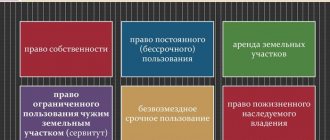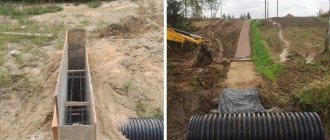Direct-flow water supply is a system consisting of a pumping station and pipe outlets. Recycling water supply is a more economical option because it uses fewer resources. The concept of heating cold water for domestic hot water means heating cold water to obtain hot water supply. An additional line has appeared in receipts for payment for this service. It is necessary to understand in detail how legal the charges are.
What is DHW in the receipt?
All services in receipts are regulated by Article 154 of the Housing Code. Cold water supply means cold water supply, and DHW supply means hot water supply.
Operators adjust readings based on environmental conditions. For heating, central and autonomous systems are used. Users of central water supply pay for hot water heating. Off-grid residents pay for gas and electricity.
The receipt includes the following for the DHW service:
- Heating of water using equipment in boiler rooms and supplying it to the finished consumer.
- Carrying out preventive maintenance of systems and mechanisms of heating equipment. Planned work and repair of routes in hot water supply networks.
- Restoring the operation of boiler rooms around the clock. DHW is supplied on an ongoing basis, but in summer the power is used sparingly.
Accordingly, payment is made for heat and water.
Residents faced with systematic temperature loss are forced to burn their own water using a boiler and other automatic devices. The DHW service also remains on their receipts. To understand this situation, you need to turn to the legislation.
Features of the service
The preparation of hot water for the needs of hot water supply occurs in centralized heating boiler houses, in the same place where the coolant of the heating system is heated.
Boiler rooms can be connected to a looped DHW system or be a dead-end type - designed for a group of houses or one house (for example, rooftop boiler rooms). The closer the consumer is to the source of hot water (boiler room), the better the quality of the service provided and the higher the water temperature. However, connecting to loop networks is preferable from the point of view of reliability and uninterrupted hot water supply.
- Boiler room maintenance. Unlike heating, hot water supply is provided all year round, while boiler houses switch to summer (minimum) operating mode.
- Trail maintenance.
- Carrying out scheduled repair work on networks.
Water heated in the boiler room for an open (unclosed) DHW system enters consumer apartments through supply water pipes, distributed through intra-house DHW networks.
It should be remembered that hot water cannot be used for cooking due to the presence of additives in it - special additives that reduce the level of scale formation on the internal walls of pipelines.
The temperature of hot water for consumers is regulated by sanitary and legal standards and is +50…+65 °C. In reality, it often does not exceed +40 °C.
This is due to heat losses during the supply of coolant along routes (poor pipe insulation, gusts) or due to low temperature at the outlet of the boiler room. Boiler room operators adjust output parameters based on outside air temperature.
The service provider’s task is to provide apartments with a utility resource of appropriate quality.
Sometimes the heating network justifies poor-quality service provision by the deplorable state of the networks - routes built in the last century that require major repairs will not withstand temperature changes in winter if the parameters of the coolant at the exit from the boiler room are maintained at the standard level.
It turns out to be a vicious circle - many residents often do not pay for hot water due to its low temperature or refuse this service altogether, switching to heating water with electric boilers. And heating network enterprises cannot carry out repair work, because... the population's debt to pay does not provide them with an influx of cash.
Whether or not to pay for a hot water service if it turns out to be of insufficient quality is a purely personal matter. It is important to understand that if you decide to take the path of non-payment, you do not need to simply create debts. It is necessary to collect the evidence base according to the following scheme: carry out commission measurements of water temperature, send the results to the company providing the services. Be sure to receive an official response explaining the reasons for the poor quality of the service. Having collected a package of evidence, you can go to court to assert your rights.
Hot water law
Since 2013, Resolution No. 406 was adopted. It is based on the decision that users of the central system must pay their bills on time on two counts. The two-component tariff in receipts implies thermal energy for water heating and cold water supply. In heating systems of a residential building, there are energy losses that are taken into account when creating standards.
At this time, payments for heating began to be charged only from April to October. The consumer now knows what bills are paid for. Starting from 2020, it is planned to approve consumption standards. There will be an additional charge for overspending.
The meaning of the abbreviations HVS and DHW, conditions for setting tariffs
Cold water supply and hot water supply stand for cold and hot water supply, respectively. In accordance with legal requirements, the assignment of current tariffs is approved by resolutions of local authorities in the regions, taking into account the following factors:
- presence of water sources;
- distances of water intake points to consumption facilities;
- water volumes;
- suitability of water resources for drinking purposes and costs of necessary treatment.
Although regions are allowed to set their own tariffs, there are federal restrictions that cannot be exceeded.
The consumer can learn more about the size of the established tariffs in the regions by contacting the official portal of local authorities or the energy supplier.
Water heating equipment
Water for premises in an apartment building is heated using equipment in the boiler room. Professional installations include several DHW modules that ensure high-quality delivery of service to the consumer.
- amount of fuel used;
- thermal power of equipment;
- maximum pressure in the system;
- heated water temperature;
- terms of use of the system.
Boiler equipment is divided into categories I and II. It is selected depending on the rules and established standards. When working, accuracy in measurements and work is important.
Standard system includes:
- piping system;
- boiler equipment;
- pumping systems;
- wastewater treatment plants;
- gas equipment.
The operation of heating networks and heat supply is ensured by high-quality equipment. When systems fail, the service organization must promptly correct the failure. Hot water supply must be on a regular basis. Additional maintenance fees for apartment building property may apply.
Is it legal to pay for water heating using a receipt in 2020?
If there is a general heat energy consumption meter in a residential building and individual meters installed in the apartments, the calculation of the amount for heating is calculated based on the readings of the general meter and further proportional distribution for each apartment.
If such a device is not available, the amount required to pay for heating is calculated based on the standard energy consumption for heating 1 m 3 of water in the reporting month and the readings of an individual water meter. If your water heater fails, your hot water bill will not increase. In this case, authorized employees of the management organization are required to repair the equipment urgently. But since repairs require payment, residents must still pay this amount. Although the heating bill will remain the same, the cost of repairs and maintenance of the property will increase. This is explained by the fact that water heating devices are part of the property of homeowners.
Component thermal energy
Cold water is calculated simply, according to consumption, at established tariffs. The cost of thermal energy resulting from mechanical vibrations is calculated taking into account the rules and regulations.
- Established tariffs for the generation of thermal energy.
- Possible costs for servicing complexes and systems.
- Energy losses in pipelines during transportation.
- The cost of services for delivering water to the consumer.
Payment for hot water supply is based on water consumption in m3. The readings of an individual apartment are taken into account, as well as values for general needs. It is customary to multiply the total consumption on the meter by specific values. The resulting values are multiplied by the tariff. In the receipt, calculations are made automatically. In order to check the work of housing and communal services or a service organization, you can independently obtain the values.
We calculate the payment for hot water supply according to Resolution No. 354
It is simply impossible to take such heat losses into account apartment by apartment, so they must be included in the overall calculation of the price of hot water supply, either based on the readings of a common meter for metering heat consumption for heating, or by calculation and statistical methods with cheating not in favor of the consumer.
The text of the documents is complex and practically inaccessible to mass payers. There is no clear system in the designation of physical quantities, which can confuse the reader; there are no names of physical quantities used in calculation formulas and explanations. It was as if they were writing for themselves. Like we know it ourselves, but others don’t need to know.
How to make your own calculation
Hot water supply is an expensive service on the bill. For high-quality supply of hot water, specialized equipment and its maintenance are required. To independently calculate the costs of domestic hot water, you need to take into account the rules and know all the components. First of all, you need to find out the tariff for thermal energy.
Dependence on metering devices:
- If there is a meter, the coefficient for heating water is taken from its readings.
- In the absence of metering devices, standard standard values are accepted.
Energy for heating for the needs of the house is proportionally divided among all owners, depending on the area of the premises. Standard values are used in the absence of a common meter.
Heating can be calculated using the formula: DHW = Q/Vtot. * Vind. + Vind. * cold water norm.
- Q – total volume of thermal energy;
- Vtot. – volume consumed for heating;
- Vind. – individual volume for each apartment.
- V – total volume of water consumption;
- N – standard values for consumption.
The results of calculating DHW depend on the cost of the elements in the formula, the presence of meters, and the type of heating supply to the house. It is better to take readings from communal meters with the person responsible for the house and a representative of the service organization.
Complaint due to incorrect calculation of receipt
After receiving discrepancies in the DHW data, first of all, they contact the organization providing the services. If they refuse to return the difference after an oral request, then the claim must be submitted in writing. An application is submitted to the General Director.
You can leave the paper in person at the reception desk or send it by registered mail with confirmation of receipt. The response must be received in writing no more than 13 days from the date of receipt.
The management company should not ignore the request, but there are cases when a response is not received within the established time frame. Also, in case of refusal, they file an appeal to the court or prosecutor's office. The basis will be Article 395 of the Civil Code. An application to the administration is also an effective way to solve the problem. The supplier must fully reimburse the costs caused by the calculation error.
Results
Water heating is an important service provided by the service organization. Payment is made in accordance with the law on hot water supply. The calculation is carried out automatically, but each consumer can check the received calculations. In case of an error, the difference must be compensated by recalculation. An additional column will appear on the receipt.
Housing and communal services receipts for payment of utility services sometimes contain strange names and abbreviations: abbreviations GVS KPU, GVS DPU, etc. This makes consumers nervous and suspicious of tariffs and accrued payments. Regulation of tariffs for hot and cold water supply, as well as sanitation, is carried out by the state, on the basis of Russian Government Decree No. 406, adopted back in 2013. This article contains information in simple words:
- explanation of what DHW KPU (DPU) and water heating are;
- calculation of consumed thermal energy;
- checking the correctness of charges for hot water supply in the receipt.
Difference between water supply and sanitation
Water supply and sewerage are two completely different utilities. Water supply means that cold water goes through cleaning and disinfection before entering the apartment, and hot water is heated to a certain temperature. Drainage is the removal of any waste water from the apartment. The service involves the primary purification of water and its direction to the sewer system. This is a complex technical process consisting of several stages. After the water is drained, it is delivered to treatment facilities, where it undergoes multi-stage purification and is disposed of.
All previous regulations were developed by federal and local authorities. The law is amended periodically. For example, questions about water quality, the safety of service provision, and the frequency of monitoring the system are undergoing changes.
Hot water supply: tariff system, control metering devices
- DHW KPU - hot water supply according to control metering devices;
- DHW DPU - hot water supply via household metering devices.
Hot water control units can be installed in apartments and used as individual metering devices for hot and cold water consumption. The housing and communal services receipt must indicate the readings of both communal and individual meters.
Payment for hot water supply is charged only if there is a central hot water supply, while water is used both as a heat carrier for heating premises and for domestic needs (as hot water).
- If there is hot water in the house, then consumption should be recorded using two general house or individual meters: one is installed on the hot water risers and shows the consumption consumption in cubic meters, the other - on the branch of the heating system and shows the amount of thermal energy consumed in Gcal.
- In houses where there is only cold water, charges for hot water are charged only during the heating season.
- If an apartment uses a boiler or gas water heater to heat water, residents pay for the energy consumed (electricity or gas).
- Some MKD apartments use a dual-circuit heating system:
- one is connected to the DHW central station;
- the other to individual internal water heaters (in case the hot water is turned off).
Tariffs for hot water supply
According to section II, clause 4 of post. No. 406, regulated state tariffs for hot water supply consist of tariffs of the following type:
- for hot water;
- for transportation through the central hot water pipeline;
- to connect the in-house system to the central system (CS) of hot water supply.
How are hot water tariffs set?
Clause 88 of Resolution No. 406 establishes a 2-component tariff for hot water, which consists of a component for cold water and a component for thermal energy (or water heating).
Thus, the cost of hot water Sgw is determined as the sum of the costs of cold water Sxv and its heating (heat energy) Ste:
Sgv = Sхv + Ste (1).
Previously, the cost of hot water was determined by the following formula:
Sgv = Vgv x Tgv (2), where
Vgv - volume of hot water consumed,
Tgv - tariff for hot water (cost of one cubic meter of hot water).
For reference: The cost of one cubic meter of hot water in Moscow in the second half of 2020 was 188.5 rubles per cubic meter.
Attention! If payments for hot water in housing cooperatives or management companies are carried out according to the old one-component tariff for hot water, then residents should not be charged for any water heating!
Calculation of the cold water component
The cold water component is determined:
- at the standard price of one cubic meter (single-rate system);
- at the price of a cubic meter plus expended power per hour per 1 m³ of water (according to a two-rate system).
That is, the tariff for cold water can also be composed of two components.
If water is taken from a water supply source by some third-party organization that has the right to do so, or is processed to turn it into drinking water, then the tariff for cold water can be set based on the material costs of this organization per 1 m 3 of water.
Formula for determining the cost of cold water Sхв used for hot water supply:
where V is the consumed volume, which is removed from the hot water meter;
Тхв - tariff for cold water.
What is thermal energy
Thermal energy is the power required to heat water, measured in gigacalories.
That is, this is the same “water heating” that can be indicated on the receipt as part of the tariff for hot water. It is included in this tariff along with the cold water component, and is not a separate fee. (Explanation for those residents who are sure that the housing and communal services authorities charge them double fees for hot water). At the same time, the receipts additionally indicate the fee for cold water, since this is a separate type of utility service.
It was decided to introduce a two-component tariff to take into account energy and transportation costs, as well as heat loss. In this case, according to the law, only heat losses along the path from the central coolant supply points to the entry point into the houses are taken into account. That is, no losses from heated towel rails and risers in the premises should be taken into account.
What is HVS KPU
These letters should be understood as hot water metering, implemented using an apartment meter. In this article, the topic raised will be discussed in particular detail.
Understanding cold water metering
The legislator has established mandatory payments for citizens of the Russian Federation for the use of utility services.
Continuous cold water supply (CWS) stands for continuous supply of a resource of appropriate quality to Russian citizens for use in everyday life.
The state provides for the norm for each consumer and the delivery of water through the municipal system or to special pumps. Accounting for cold water must be carried out in the following ways:
- fixing a specific consumer norm for each person registered in a residential premises;
- providing any housing with a special meter.
The counter (KPU) measures the amount of cold water used per month, after which the data is transferred to the person who provides the service.
Important! A special designation “DPU” will appear in the payment, which indicates the obligatory amount for the use of cold water supply using a home meter.
In the absence of a meter, the determined consumption is calculated from general indicators. This option is not entirely profitable, since thrifty people will have to overpay for the service. The data from the residential premises is taken as a basis.
KPU designation on the receipt
Individuals receive utility bills based on their needs. People are not always fluent in the symbols. Cold water in receipts is no exception.
What is cold water for domestic hot water in the receipt? The following abbreviations are generally used on receipts:
- HVS DPU (deciphering is given above);
- Cold water supply for hot water supply - the so-called supply of cold water for the possibility of using hot water supply. Everything is simple - heating occurs;
- DHW DPU - the amount of water used during the use of hot water supply.
In addition to water supply, utility companies provide wastewater services to people. The latter term should be understood as disposal of used water using sewerage. For this service, special buildings are equipped to process streams of all types. There are three lead designs:
- general. It has only one network for withdrawing all funds;
- separate. Such a system is classified into complete and incomplete.
The first has two closed networks that output resources. The other is for rain accumulations—a half-split drainage design. Divided into household and rainwater. If the networks intersect, then fencing structures are installed to rid the reservoir of excess inflows during rain.
Important! Therefore, the receipts contain a separate item under which fees for services are charged. This is an extremely necessary point in the document. The incredible amount of resource used must be processed before being released into waterways.
Water disposal is calculated as follows:
- First, the needs for time are formed; when specifying data, one should proceed from the results of water consumption per apartment. Reading results may vary by region;
- Some homes may need to use a common household meter. If there is no measuring device, the amount is calculated according to fixed standards.
Consumer protection is equally important. Usually, receipts have lines for water heating in order not to overpay for heating. Pay attention to this. It is possible to create an additional line in a receipt of the established form only if the position of the owner of the premises is agreed upon.
Relationship between DHW and cold water
According to current standards and documents, hot water supply (hot water supply) must be supplied to all populated areas with temperatures up to 75 ° C. The resource is constantly provided to people. Heating points can switch to a more relaxed (summer) mode. Hot water enters the city hot water system and is subsequently distributed to residential premises.
Important! Heating companies produce hot water by heating purchased hot water. As a result, an item such as heating appears on payment receipts. In this case, the data from the common house meter for hot water consumed is taken into account. It is necessary to configure the metering devices correctly by entering the name of the service.
For complex heating of apartment buildings, you should pay for utilities. Some abbreviations are quite simple to decipher. To know what you're paying for, check online or contact your utility company for more details.
Source: https://okommunalke.ru/uslugi/hvs-kpu









